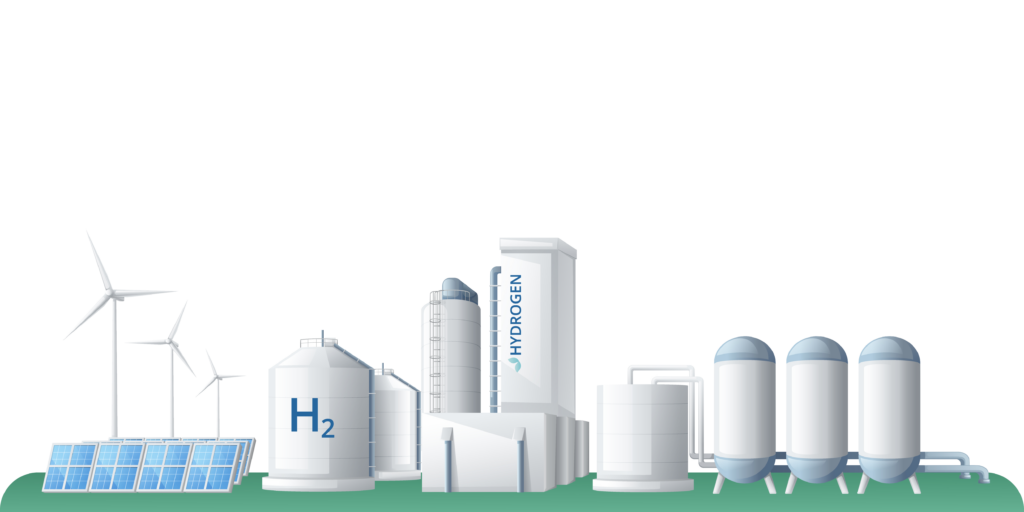Green Hydrogen has several applications in:
Transportation fuel
Energy storage
Industry
Carbon capture and utilization (CCU)
Electricity production (fuel cells)

- Transport – zero-emission fuel for buses, ships, trains.
- Energy storage – green hydrogen can be stored and then converted into electricity.
- Industry – input for various processes such as: ammonia and methanol production, used also as a heat source.
- Carbon capture and utilization (CCU) – hydrogen is applied for convertion of captured CO2 into chemicals.
- Electricity production (fuel cells) – clean, efficient electricity generation.

Applications
Light/Heavy Use Vehicles- H2 fuel cell cars are mostly available in areas, where hydrogen refueling stations already exist. Currently, there are too few stations of this type to make these cars competitive for those powered by electricity. Refueling time and driving range of hydrogen fuel for heavy-duty vehicles as buses, tracks is similar to driven by gasoline. Furthermore, due to their predictable routes, establishing a replenishment station for such vehicles becomes more feasible over time.
Microgrids- fuel cells could be used to store energy and combined with green energy generation facilities, to provide reliable, stable access to electricity. Through mixing energy storage by batteries and fuel cells, this ensures improved energy protection than using only one method.
Maritime transport- replacing conventional fuel with hydrogen utilized in fuel cells is a possible solution for long distances.
Methanol and ammonia as an energy carrier
Methanol and ammonia can be synthesized from hydrogen and carbon dioxide (CH3OH) or hydrogen and nitrogen (NH3) and they are potential energy carriers, alongside hydrogen.
Methanol exists in a liquid state under normal conditions. Methanol also has a higher volumetric energy density than liquefied or compressed hydrogen, moreover, it is easily transported and has no special installation requirements or storage tanks.
Ammonia, on the other hand, must be refrigerated to -34 degrees Celsius or maintained under moderate pressure. Nitrogen for ammonia production doesn’t require direct recycling and recovery after dehydrogenation phase for hydrogen release. As nitrogen is derived from the atmosphere and flows back there after hydrogen release, ammonia generation from renewable sources produces zero carbon dioxide emissions. Additionally, ammonia is more chemically stable, which reduces risk of leakage, making it a safer option than storing and transporting pure hydrogen.
Future hydrogen production outlook
Total hydrogen production in 2022 was around 95 million tons, most of which was grey hydrogen.
According to IRENA`s World Energy Transition Outlook 2023 proposal, green hydrogen generation is expected to rise to 492 million tons by 2050.
Despite that, even 31.5 million tons of blue hydrogen will be necessary for industry and economy.